
Sustainable Chemistry and Pharmacy
Scope & Guideline
Bridging Chemistry and Pharmacy for a Sustainable Tomorrow
Introduction
Aims and Scopes
- Sustainable Synthesis Methods:
Research on green synthesis techniques that minimize waste and energy consumption, emphasizing the use of renewable resources and environmentally friendly catalysts. - Waste Valorization:
Studies that explore the conversion of agricultural, industrial, and municipal waste into valuable products, thereby promoting a circular economy. - Analytical Chemistry Innovations:
Development of sustainable analytical methods that utilize green solvents and minimize environmental impact, focusing on the analysis of pharmaceuticals, food safety, and environmental monitoring. - Biopolymer Applications:
Exploration of biopolymers in various applications, including packaging, drug delivery, and agricultural practices, highlighting their eco-friendly properties. - Environmental Remediation:
Research dedicated to methods for removing pollutants from water and soil, including the use of bioremediation and advanced materials for adsorption and degradation. - Pharmaceutical Sustainability:
Investigations into sustainable practices in pharmaceutical development, including drug formulation, delivery systems, and the lifecycle assessment of pharmaceutical products.
Trending and Emerging
- Deep Eutectic Solvents (DES):
Research on deep eutectic solvents has surged, focusing on their application as green solvents for extraction and synthesis processes, showcasing their potential in reducing environmental impact. - Biotechnology and Biocatalysis:
There is an increasing trend towards using biocatalysis and biotechnological approaches in synthesis and remediation, indicating a shift towards nature-inspired solutions. - Sustainable Packaging Solutions:
Emerging studies on sustainable packaging materials, particularly those derived from biopolymers and natural sources, reflect a growing concern for reducing plastic waste. - Pharmaceutical Waste Management:
Research addressing the management and recycling of pharmaceutical waste is gaining traction, highlighting the industry's shift towards more sustainable practices. - Machine Learning in Chemistry:
The integration of machine learning techniques for optimizing chemical processes and analyzing data is becoming a prominent theme, reflecting the journal's embrace of technological advancements.
Declining or Waning
- Traditional Synthetic Methods:
There has been a noticeable decrease in publications focusing on traditional synthetic methods that do not align with green chemistry principles, as the emphasis shifts towards more sustainable alternatives. - Non-Renewable Resource Utilization:
Research relying heavily on non-renewable resources is becoming less common, as the journal increasingly prioritizes studies that utilize renewable materials and sustainable practices. - Chemical Processes with High Environmental Impact:
Studies detailing chemical processes that have significant environmental consequences are declining, reflecting a growing awareness and preference for low-impact methodologies.
Similar Journals

REVUE ROUMAINE DE CHIMIE
Illuminating the Path of Chemistry Research and DiscoveryREVUE ROUMAINE DE CHIMIE is a distinguished academic journal in the field of chemistry, published by EDITURA ACAD ROMANE in Romania. With an ISSN of 0035-3930, this journal has been a valuable platform for disseminating original research and insights in the diverse realm of chemistry since its inception. The journal currently operates under a competitive tier, categorized in Q4 for miscellaneous chemistry fields, as reflected in its Scopus ranking of #348 out of 408, placing it within the 14th percentile. Aiming to foster scientific discourse and innovation, the REVUE ROUMAINE DE CHIMIE provides a repository of knowledge that is crucial for researchers, professionals, and students eager to advance their understanding and contribute to the global chemistry community. By bridging local and international research initiatives, this journal plays an essential role in enhancing the visibility of Romanian scientific contributions on the world stage.
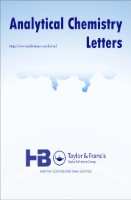
Analytical Chemistry Letters
Exploring Interdisciplinary Innovations in ChemistryAnalytical Chemistry Letters is a notable journal published by Taylor & Francis Ltd, focusing on the interdisciplinary aspects of analytical chemistry and its applications across various fields, including materials science and forensic medicine. With an ISSN of 2229-7928 and an E-ISSN of 2230-7532, this journal provides researchers and professionals a platform to share their findings from 2011 to 2024, fostering advancements in methodologies and technologies. Despite being classified in the Q3 and Q4 category quartiles across multiple disciplines, the journal is crucial for emerging studies and discussions, particularly in the context of innovative analytical techniques and their relevance to real-world challenges. While currently not an open-access journal, its rigorous peer-review process ensures high-quality contributions that are essential for academics, professionals, and students keen on bridging theory and practice. The journal continues to build its reputation, reflected in its Scopus rankings which place it amidst a competitive landscape, encouraging growth and collaboration within the scientific community.
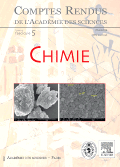
COMPTES RENDUS CHIMIE
Fostering Global Collaboration in Chemical Sciences.COMPTES RENDUS CHIMIE, published by the prestigious Académie des Sciences in France, stands as a significant journal in the fields of chemistry and chemical engineering. With an ISSN of 1631-0748 and an E-ISSN of 1878-1543, this open-access journal has been committed to disseminating high-quality research since its transition to open access in 2020. Featuring a diverse array of studies, the journal covers innovative research trends and applications, while maintaining a Q3 category ranking in both Chemical Engineering (miscellaneous) and Chemistry (miscellaneous) as of 2023. Its Scopus rankings, positioning at #251 out of 408 in general chemistry and #169 out of 273 in general chemical engineering, highlight its growing impact within the scientific community. Authored by a global cohort of scientists and researchers, COMPTES RENDUS CHIMIE is dedicated to the advancement of knowledge and sharing insights that are vital for ongoing research and development in the chemical sciences. Located in the heart of Paris at 23 Quai de Conti, 75006, France, the journal is an essential resource for those passionate about chemistry and engineering disciplines, fostering collaboration and innovation across the world.

Environmental Chemistry Letters
Illuminating the path to environmental solutions.Environmental Chemistry Letters, published by Springer Heidelberg, stands at the forefront of interdisciplinary research within the field of Environmental Chemistry. Since its inception in 2003, this esteemed journal has provided a dynamic platform for the dissemination of innovative studies and groundbreaking findings, contributing significantly to the understanding of chemical processes affecting the environment. With an impressive impact factor and ranking third out of 147 journals in Environmental Chemistry (98th percentile as per Scopus), it consistently attracts high-quality submissions from researchers around the globe. The journal maintains a Q1 category rank as of 2023, underscoring its prominent position in scholarly discourse. Environmental Chemistry Letters is dedicated to advancing knowledge on contemporary environmental issues, fostering solutions to mitigate chemical pollution, and promoting sustainable practices across various sectors. Researchers, professionals, and students alike will find invaluable resources within its pages as it continues to illuminate the path toward environmental sustainability.
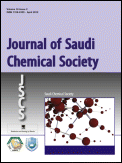
Journal of Saudi Chemical Society
Elevating Research Standards in the Chemistry Community.The Journal of Saudi Chemical Society, published by ELSEVIER, stands as a premier platform for advancing knowledge in the field of chemistry. Since its inception in 2009, this Open Access journal has garnered significant attention, securing a prestigious Q1 ranking in the Chemistry (miscellaneous) category for 2023, reflecting its position among the top journals in the discipline. With an impressive Scopus ranking of #66 out of 408 in General Chemistry, this journal boasts a commendable 83rd percentile, underscoring its impact and relevance in the global research community. The journal aims to disseminate high-quality research articles, reviews, and case studies, fostering innovation and collaboration among chemists and allied professionals. By enabling widespread access to cutting-edge research, the Journal of Saudi Chemical Society plays a crucial role in supporting the educational and professional development of students, researchers, and practitioners alike, making it an essential resource for anyone invested in the dynamic field of chemistry.
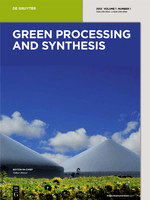
Green Processing and Synthesis
Unlocking the Potential of Green ProcessingGreen Processing and Synthesis, published by DE GRUYTER POLAND SP Z O O, stands as a vital open-access journal in the realms of Chemical Engineering, Environmental Chemistry, Fuel Technology, and more since its inception in 2012. With an impressive impact factor and currently ranked in the Q2 category across multiple domains, this journal plays a key role in disseminating cutting-edge research that addresses global sustainability challenges. The journal emphasizes innovative methodologies and sustainable practices that are crucial for advancing green technologies. Researchers, professionals, and students alike are encouraged to explore its extensive archive and contribute to the evolving conversation around environmentally conscious processing and synthesis techniques, all accessible freely since 2019.

Journal of Industrial and Engineering Chemistry
Fostering Innovations for a Sustainable TomorrowThe Journal of Industrial and Engineering Chemistry, published by Elsevier Science Inc, stands as a premier platform since its inception in 1996, dedicated to the dissemination of innovative research in the field of Chemical Engineering. Located in South Korea, this influential journal has established itself with an impressive impact factor and is categorized in the Q1 quartile for chemical engineering (miscellaneous), ranking in the top 12% of its category according to Scopus. With a focus on cutting-edge industrial applications, the journal covers a diverse range of topics including chemical processes, engineering innovations, and sustainable practices, appealing to a broad spectrum of researchers, professionals, and students. Although currently not open access, the journal offers a wealth of resources for advancing knowledge and driving forward the chemical engineering discipline. The converged years from 1996 to 2024 reflect its ongoing commitment to excellence and timeliness in publishing high-quality research.

JOURNAL OF THE CHEMICAL SOCIETY OF PAKISTAN
Pioneering Research for Tomorrow’s Chemical Challenges.JOURNAL OF THE CHEMICAL SOCIETY OF PAKISTAN is a premier academic journal published by the Chemical Society of Pakistan, focusing on advancing the field of chemistry through rigorous research and scholarship. Established in 1996, this journal aims to disseminate high-quality research articles, reviews, and insights pertaining to various subfields of chemistry, making substantial contributions to both local and international scientific communities. With a current impact factor placing it in the Q4 category, the journal continues to foster discussions on emerging trends and innovations within the discipline. Additionally, it holds a Scopus rank of #305 out of 408, highlighting its growing influence despite being positioned in the 25th percentile. Although it is not an open-access journal, it provides a crucial platform for researchers and professionals in Pakistan and worldwide. The JOURNAL OF THE CHEMICAL SOCIETY OF PAKISTAN serves as a valuable resource for students, educators, and industry professionals alike, facilitating the exchange of knowledge and promoting advancements in chemical sciences.

Vietnam Journal of Chemistry
Empowering Chemists with Valuable InsightsVietnam Journal of Chemistry, published by WILEY, is a prominent academic journal that serves as a platform for the dissemination of innovative research in the field of chemistry. With its ISSN 0866-7144 and E-ISSN 2572-8288, this journal has made a significant impact on the global scientific community, evidenced by its 2023 Scopus ranking as #274 in the General Chemistry category and a commendable percentile of 32nd. The journal, categorized in the Q3 quartile for miscellaneous chemistry subjects, aims to foster communication among chemists from Vietnam and around the world, encouraging collaboration and the exchange of cutting-edge knowledge. While it currently does not offer Open Access options, the Vietnam Journal of Chemistry is committed to contributing valuable insights from its coverage years spanning from 2018 to 2024, making it a worthy resource for researchers, professionals, and students dedicated to advancing the field of chemistry. Based in the United Kingdom, it stands as a testament to the vibrant research endeavors emerging from Vietnam and beyond.
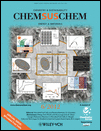
ChemSusChem
Advancing Sustainable Solutions Through ChemistryChemSusChem is a premier interdisciplinary journal, published by WILEY-V C H VERLAG GMBH, that focuses on the critical fields of Chemical Engineering, Energy, Environmental Chemistry, and Materials Science. Since its inception in 2008, the journal has consistently maintained a Q1 ranking across multiple categories, highlighting its role as a vital resource for researchers and professionals dedicated to advancing sustainable chemical processes and technologies. With an impressive impact factor, it ranks 12th in General Chemical Engineering and is highly regarded within its scopes, indicating the journal's commitment to publishing high-quality, innovative research that addresses global challenges in energy and environmental sustainability. Though it operates on a subscription model, its contributions are essential for those in academia and industry seeking cutting-edge developments in sustainable chemistry. As it approaches its convergence span through 2024, ChemSusChem continues to shape the future of sustainable chemistry, making it a must-read for students, researchers, and practitioners alike.